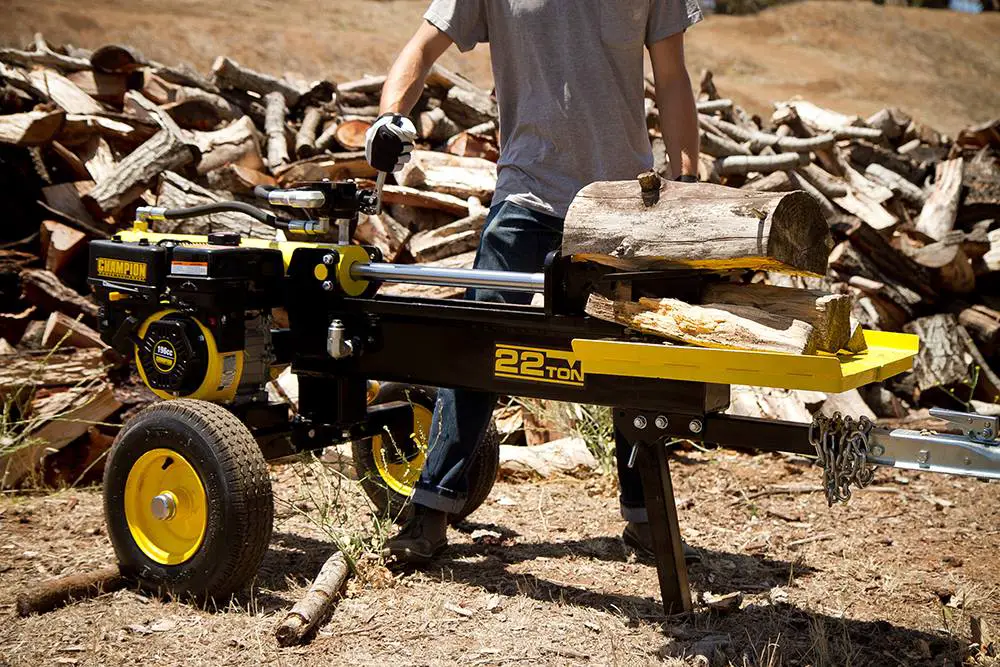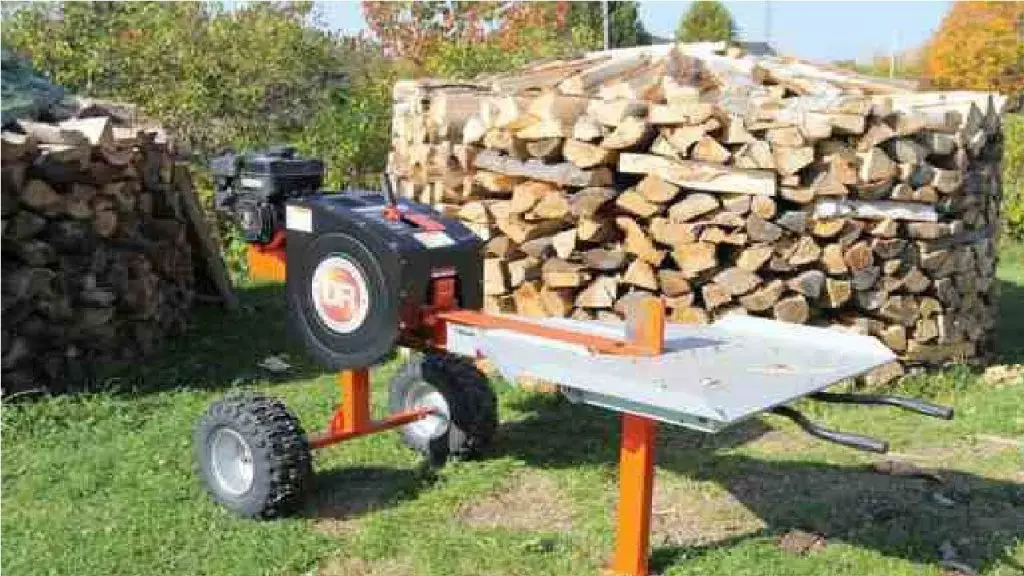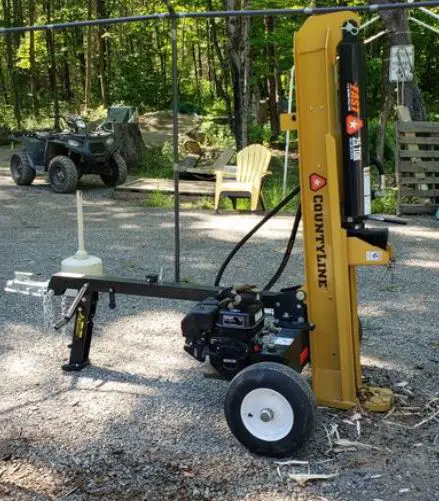A log splitter is a mechanical device designed to split logs into smaller, more manageable pieces for firewood. Available in manual, gas, or electric-powered models, it uses a hydraulic or mechanical system to force a wedge through the log, reducing the physical effort and time required for wood splitting.
If you’re tired of manually splitting logs with a maul or axe, consider switching to a log splitter. A log splitter is a tool designed to split logs. It includes a hydraulic ram that sends the log into a blade.
With a quality log splitter, you can make short work of chopping firewood from a felled tree. Here is a quick look at log splitters and their main features.

Table of Contents
What is a Log Splitter Used For?
A log splitter is made specifically for splitting logs. You can perform the same task with an axe, or a large enough table saw. However, a log splitter offers several unique benefits.
Here are some of the reasons to use a log splitter:
- Split logs into firewood with less effort
- Cut logs to similar sizes for easier stacking
- Reduce your risk of injury when splitting logs
Using a log splitter involves less effort than other options, such as manually splitting logs with a splitting maul. You need to place the log on the cradle and let the splitter do the hard work.
You can also cut logs to similar sizes, which can help you stack more efficient woodpiles. You end up with smaller gaps between pieces, so the wood takes up less space than unsplit wood. Creating a neat, consistent woodpile decreases the risk of it collapsing or becoming a home for pests during the winter.
You may also reduce your risk of injury when using a log splitter instead of an axe. Swinging a large maul creates a potential hazard, as anyone in your range of motion is at risk of getting hit. You may also miss the log or lose your grip on the axe, an issue a log splitter can eliminate.

Key Design Features
A log splitter typically includes a heavy-duty steel or aluminum frame with two large wheels and a post. The cradle is the area on the top of the frame where you set a log, which typically rests directly above the wheels.
A hydraulic cylinder with a sharp, flat blade sits ahead of the log and connects to a pump. The pump is connected to a valve that separates the hydraulic system from a tank of reservoir hydraulic oil.
After starting the engine, pressure builds in the pump. Releasing the valve sends the pressure to the hydraulic cylinder with the blade. The cylinder and blade shoot out with great force, splitting the log.
Here are a few of the main features to pay attention to when shopping for a log splitter:
- Splitting pressure
- Cycle time
- Log size range
- Portability and size
Splitting Pressure
When looking at gas-powered log splitters, I always pay attention to the splitting pressure. A five-horsepower log splitter with a two-stage pump should offer at least 2500 psi of pressure, enough to split oak and other hardwoods.
Cycle Time
Cycle time refers to the time you need to wait before splitting another log. An efficient log splitter should have a cycle time of about 15 seconds.
Log Size
Small log splitters may only support smaller logs, which would require you to chop logs into smaller sections before using the splitter. I commonly use a splitter that can hold logs measuring at least 20 inches in diameter.
Portability and Physical Size
Where do you plan on storing your log splitter? If you have limited space, you may need to look at the dimensions of the splitter. A folding design is helpful as well. You can fold the cradle upward so that the splitter takes up less space in storage.

Different Types of Log Splitters
The main types of log splitters include:
- Gas
- Electric
- Manual
Gas-powered log splitters offer the most power. They are also loud but are the best option for splitting wood frequently or dealing with very hard wood.
Electric log splitters are intended for mid-size wood logs of moderate hardness. If you have smaller logs and only need to cut logs once or twice per year, you may prefer the convenience of using an electric log splitter. You can avoid dealing with oil changes and gas.
Manual log splitters often include a lever you pump to build pressure before releasing a valve that sends the actuator cylinder through the log.
Popular Log Splitter Brands
The most recommended brands of log splitters include:
- Champion Power Equipment
- Boss
- Craftsman
- Iron & Oak
- NorthStar
Craftsman and Champion offer some of the best mid-range options for those with a limited budget.
Conclusion
A log splitter offers a safer, more efficient way to chop firewood than an axe or a chainsaw. You can quickly split large logs with minimal effort instead of manually swinging an axe or dealing with the safety concerns of operating a chainsaw.
When shopping for log splitters remember to find an option built for your needs. Use a heavy-duty splitter if you need to split logs frequently.
